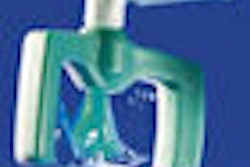Visual exams are appropriate and adequate when it comes to assessing caries prior to placing sealants, particularly in school-based sealant programs, according to a study in the current Journal of the American Dental Association (July 2010, Vol. 141:7, pp. 854-860).
Researchers from the University of Michigan School of Dentistry reviewed the evidence supporting current guidelines for detecting cavitated carious lesions. They examined existing systematic reviews of caries detection and diagnosis, including those presented at the 2001 National Institutes of Health Consensus Development Conference on Diagnosis and Management of Dental Caries Throughout Life, published evidence related to the International Caries Detection and Assessment System criteria, and other peer-reviewed publications.
"To distinguish between noncavitated and cavitated carious lesions, clinicians should use visual assessment," the researchers wrote.
Teeth should be free of debris; the clinician should not use an explorer under force; radiographs are not indicated solely for the placement of sealants, especially in school-based sealant programs targeting children in second through sixth grades; and the use of magnification and caries detection devices is not necessary to determine cavitation, they concluded.
"Two systematic reviews showed that visual or visual and tactile methods have higher specificity than some commercially available detection methods, such as laser fluorescence or fiber-optic transillumination," the authors noted. "Thus, visual methods result in fewer false-positive results and are desirable for use in school-based sealant programs."
Copyright © 2010 DrBicuspid.com



















